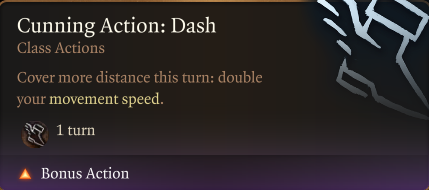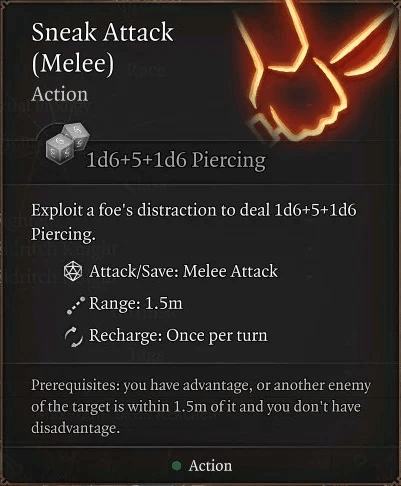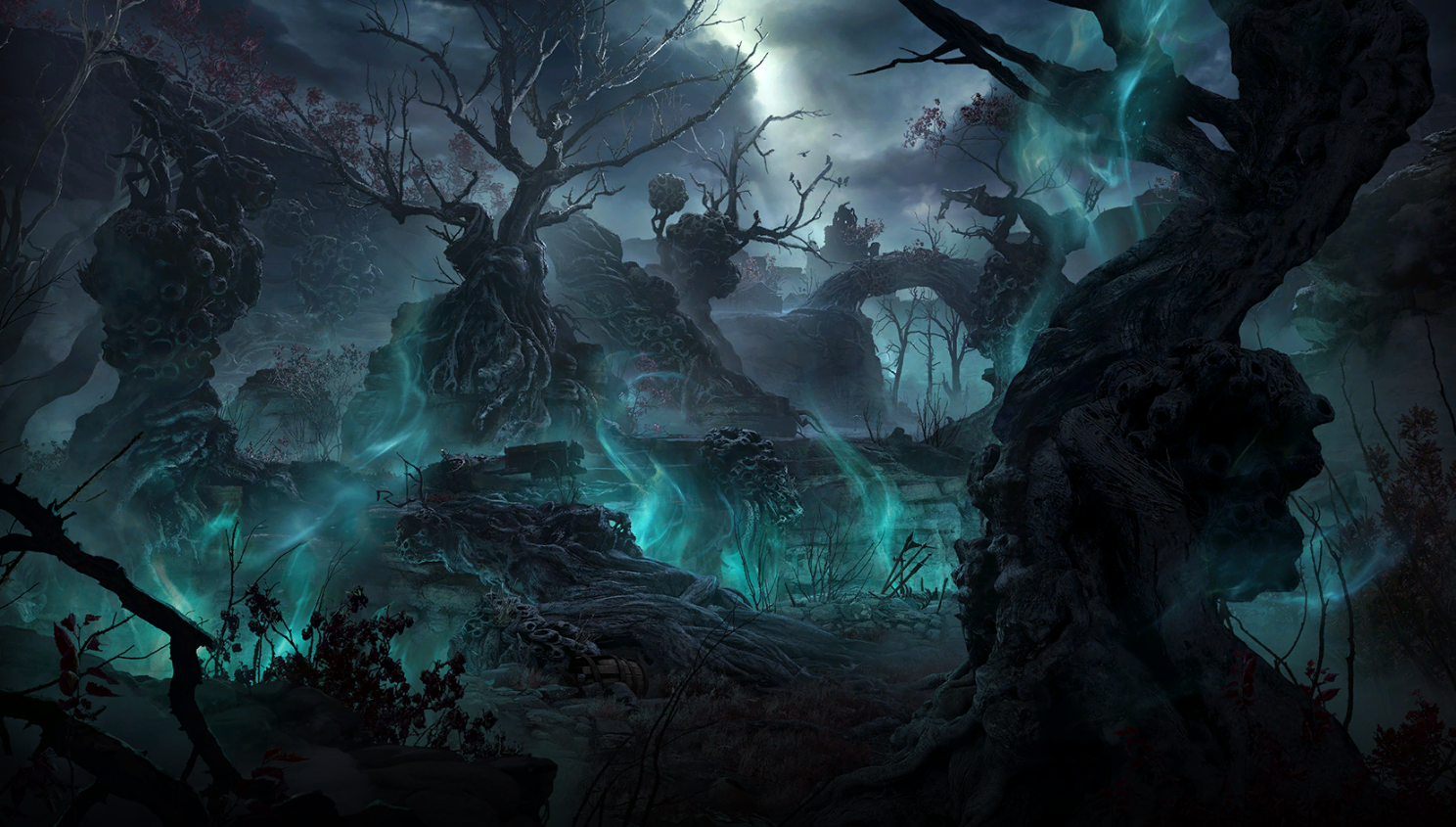Everything You Should Know About the Baldur’s Gate 3 Rogue and its Subclasses
The Baldur’s Gate 3 Rogue class traditionally focuses on stealth and sneaking, but is surprisingly flexible in playstyle.
They can be seriously dangerous melee strikers, sneak up on critical targets, or rain arrows down on their foes from afar!
Whether it’s in or out of combat, they’re extremely resourceful and use their abilities and skills to maintain advantage in any situation.
In this class overview, we’ll be covering the BG3 Rogue’s pros and cons, core mechanics, and subclasses.
Find out where the Rogue ranks in our Baldur’s Gate 3 class tier list.
Pros and Cons
![]()
Pros
- Extremely high critical damage capabilities with their sneak attack ability.
- Naturally gifted explorer or scout for your team as Dexterity provides a high chance for success when stealth as well as accessing locked doors. Further utility options for your party outside of combat with selectable expertise in multiple skills.
- Rogue’s defense relies on actions/features like Disengage or Uncanny Dodge and Evasion. You’ll utilize your Dexterify score to avoid or minimize the incoming damage from enemies and then reposition to avoid further damage.
Cons
- Rogues can struggle if they are cut off from their allies. They require a decent amount of teamwork and coordination, for example, the most common form of advantage for a Rogue’s Sneak Attack bonus in BG3 is when the target is flanked by an ally.
- Attacking a Flanked target is not the only way to access advantage, but a Rogue’s damage needs their Sneak Attack bonus, so you will need to find ways to gain advantage in combat.
- Rogue’s are essentially limited to only finesse weapons as other weapon classes do not allow for the additional damage from Sneak Attack.
BG3 Rogue Mechanics
Rogues are the versatile assassins living in the shadows. They don’t inherently have access to spellcasting, however, their proficiencies and expertise in skills make them extremely valuable both in and out of combat. Due to these features, your Rogue should always have the upper hand in any given situation!
Cunning Action, Expertise, and Sneak Attack
Rogue’s versatility stems from abilities and features related to a high Dexterity score, so Dexterity will be your primary ability score. The core 3 features for a Rogue are their Cunning Actions, Skill Expertise, and their Sneak Attack ability. I will cover each in more detail below, but you should be aware that each of these abilities is further expanded upon with the Rogue subclasses. You can read more about the subclasses later on in this article.
Cunning Action
Cunning Action provides the ability to utilize a few key main actions as bonus actions instead. This may provide you the ability to dash as a bonus action to close the gap between you and a key target, while saving your main action for a melee or ranged attack to neutralize the foe.

Another example of the use of cunning actions could be moving out of sight range of an enemy, using your cunning action to hide, and then repositioning to attack your target at range with advantage! The list of Cunning Actions for Rogues in Baldur’s Gate 3 include:
- Cunning Action: Dash
- Cunning Action: Disengage
- Cunning Action: Hide
Expertise
While Expertise may not seem as good on paper, it is one of the strongest features in the entire game as the applications of your Rogue’s Expertise last from character creation to the end of the game. The core of the feature provides your Rogue with double their proficiency bonus when rolling a skill check for a particular skill.

During character creation, you select the skills with which you are proficient and then you select two of these skills of which you are now an expert. This conceptually provides your Rogue with the unique ability to have significantly increased success when using these two skills. It’s recommended that you consider selecting Dexterity-based skills and consider skills that your party may not have covered elsewhere. The most commonly selected skills for expertise are Stealth and Sleight of Hand for a Rogue.
Sneak Attack
Sneak Attack is an ability for Rogues that allows you to deal extra damage when your targets are distracted. Sneak Attack will only apply when your Rogue is utilizing a finesse weapon and when you have advantage on you attack against the target.

Advantage on your attacks can be provided in many ways – the most common occurs when your target is flanked, when you are hidden, or when your target is knocked prone and you’re making a melee attack.
The bonus damage dealt with Sneak Attack increases by an additional 1d6 in damage every two levels, which means at levels 11 and 12 you are dealing 6d6 bonus damage each time you are able to activate Sneak Attack. This ability scales well throughout the game and is something that you will want to leverage often to increase the impact of your Rogue.
The Rogue’s Party Role
In Combat
The typical Rogue spends their turn either looking for methods to gain advantage against key targets or leveraging their current advantage. This comes in two forms, primarily melee and ranged.
You may spend the first half of combat on the outskirts using your Cunning Actions to hide or dash around the edge of the battle before landing a Critical Hit Sneak Attack against a target. Halfway through the fight, you may find an enemy or two within walking distance that you can run up to and hit with your melee attack to finish them off.

During the early levels as a Rogue, it’s very common to move, use Cunning Action: Hide, then use your ranged Sneak Attack to hit a critical target with your advantage from being hidden, then use Cunning Action: Hide a second time to reposition yourself around the edge of the battlefield.
Your enemies will know you exist within the fight, but since you’re constantly repositioning and hiding, they may struggle to locate you precisely, which continues to give you advantage. The critical learning curve for Rogues is understanding all of the methods to gain advantage on your attacks and then knowing which ones to use in any given situation. Doing so will significantly increase your damage output.
Out of Combat
Alright, so what does a Rogue do outside of combat? The answer tends to be whatever you have decided your expertise is. A flat double proficiency bonus to skills is a significant bonus in Baldur’s Gate 3 as by level 9 you have an automatic +8 to those skill checks.

This means that your minimum roll on a d20 is 10 (2+8) since a natural 1 is an automatic failure in Baldur’s Gate 3. Rogues also use Finesse weapons, which scale with Dexterity, so you should have a really high Dexterity score, and it’s often recommended that Rogues take expertise in Dexterity-based skills for this reason. It is not uncommon to average rolls between 20-25 on your expertise skill checks by level 5 as a Rogue. The Dexterity-based skills are:
- Acrobatics
- Sleight of Hand
- Stealth
Do not feel that you are limited to the stealthy, thieving playstyle for your Rogue though as they can be great faces of your party with a few attribute points in Charisma and Expertise in Charisma skills such as Deception and Persuasion. These skills could fit the theme of a Spy if you were looking to roleplay a character along those lines.
Rogue Subclasses
Unlike other classes in Baldur’s Gate 3, Rogues do not select their subclass until you reach level 3. The subclasses of Rogues provide 3 very different playstyles, each of which can elevate how you are able to interact with different game mechanics, so consider how you wish to play your Rogue before selecting the subclass. The options are:
Arcane Trickster
![]()
The Arcane Trickster subclass provides your Rogue with access to spellcasting from the Wizard spell list. You will utilize intelligence as your spellcasting modifier so it is important to have a high intelligence ability score if you are opting to be an Arcane Trickster.
If you select this Rogue subclass, you gain a clever touch of magic resulting in the following:
| Level | Feature | Description |
|---|---|---|
| 3 |
Unlock Spell Slots |
|
| 3 |
Mage Hand Cantrip |
|
| 3 |
Cantrips |
|
| 3 |
Known Spells (Always Prepared) |
|
| 4 |
Unlock Spell Slots |
|
| 4 |
Known Spells (Always Prepared) |
|
| 7 |
Unlock Spell Slots |
|
| 7 |
Unlock Spell Slots |
|
| 8 |
Known Spells (Always Prepared) |
|
| 9 |
Magical Ambush |
|
| 10 |
Unlock Spell Slots |
|
| 10 |
Known Spells (Always Prepared) |
|
| 11 |
Known Spells (Always Prepared) |
|
Assassin
![]()
As an Assassin, you will dish out massive punishment to a single foe at a time. This class capitalizes on making the first move, often before combat even begins. You will receive several features that provide reliable, higher damage amounts to single targets as well as providing additional advantage options for you.
If you select this Rogue subclass, your kills will be quick and clean as you receive the following:
| Level | Feature | Description |
|---|---|---|
| 3 |
Assassin’s Alacrity |
|
| 3 |
Assassinate Ambush |
|
| 3 |
Assassinate Initiative |
|
| 9 |
Infiltration Expertise |
|
Thief
![]()
If you select the Thief subclass for the Rogue then you’re going for the classic Rogue archetype commonly referred to in other forms of media. The Thief in Baldur’s Gate specializes in stealth, picking locks, and item theft.
Additionally, you gain access to an additional bonus action which adds a layer of versatility to your turn in combat. As a Thief, you gain the following:
| Level | Feature | Description |
|---|---|---|
| 3 |
Fast Hands |
|
| 3 |
Second Story Work |
|
| 9 |
Supreme Sneak |
|
So, which Rogue subclass should you play?
As previously mentioned, the classic Rogue archetype is the Thief. If you’re looking to embrace the world of thievery then you will use your skills in stealth and larceny to acquire whatever you wish. Additionally, you have the versatility to ensure optimal positioning during combat and maximize your Sneak Attack damage bonus.
If you are hoping to elevate your individual lethality and overall impact in combat scenarios, then the Assassin Subclass is the choice for your Rogue. As an Assassin you would avoid charging in but rather attack with advantage at range to initiate combat scenarios. Doing so will help apply your Sneak Attack and automatic critical hits on your target. As the combat phase continues, you should consider using items to supplement your physical damage options with magical spell effects.
The Arcane Trickster Subclass is recommended for a player who is looking to reimagine how a Rogue can be played within Baldur’s Gate 3. Having access to casting a variety of spells, including disabling your enemies, can provide several opportunities for advantage for yourself and your allies. Even as an Arcane Trickster, you are still a Rogue so do not forget to use your Dexterity-based Skills and your Expertise in social situations. The foundational features of Rogue still provide you with great utility for exploration so continue uncovering hidden secrets and treasure, but do so with magic!
Conclusion
The Baldur’s Gate 3 Rogue provides features and abilities that make you extremely versatile.
Whether you are sneaking through enemy camps, clearing the path of traps ahead of your allies, or delivering critical blows to your foes with sneak attacks, it is your flexibility in any situation that sets you apart from other classes and makes you a crucial asset.
Embrace and enhance your roguish nature and you will excel in the challenging and dangerous world of BG3!
 Download APP
Download APP